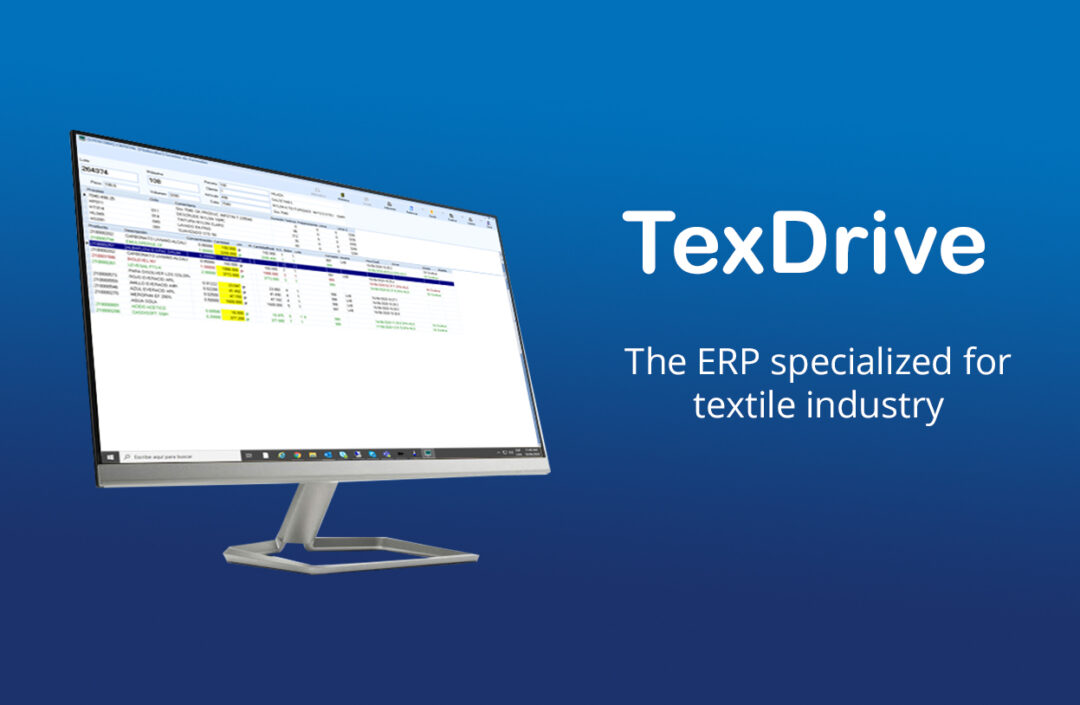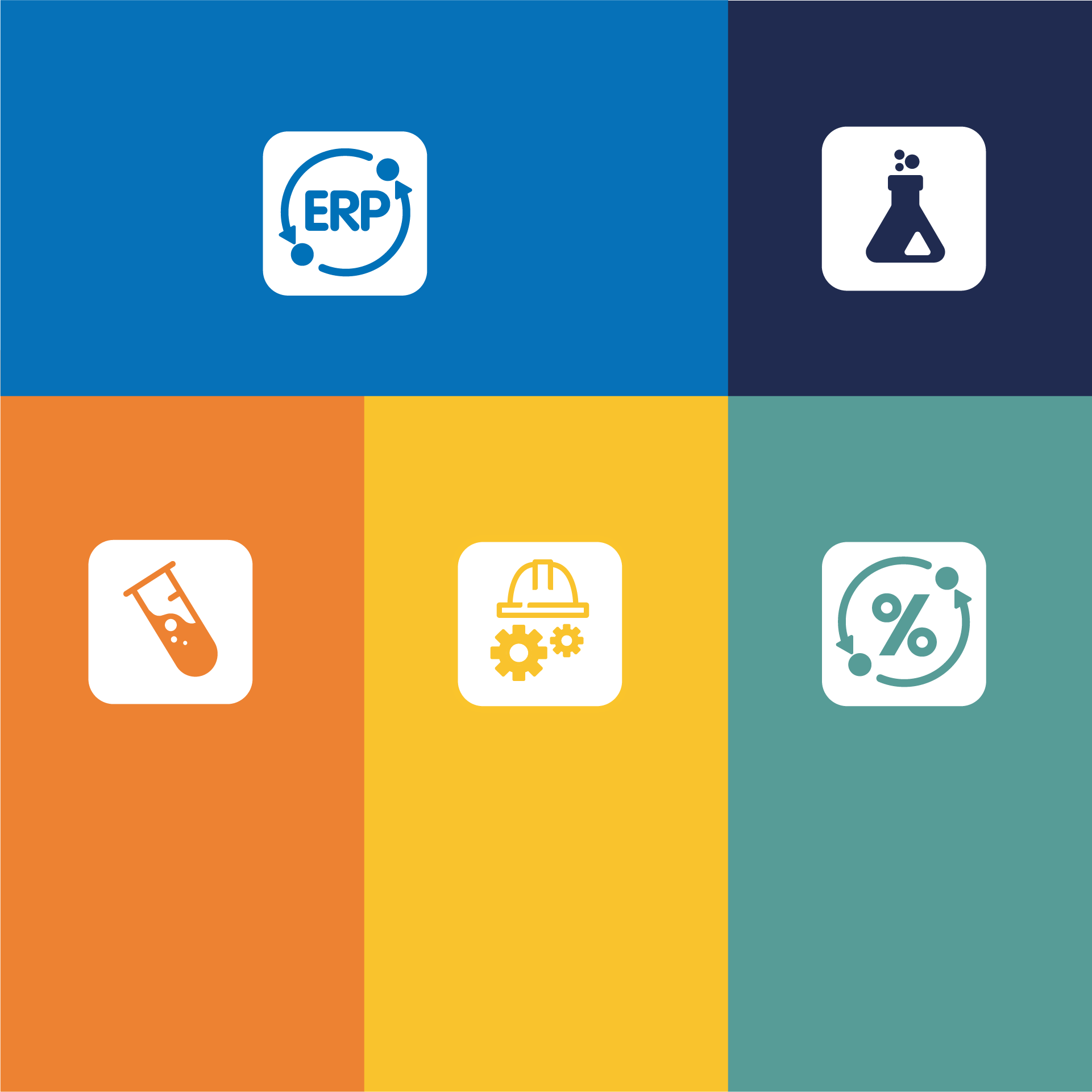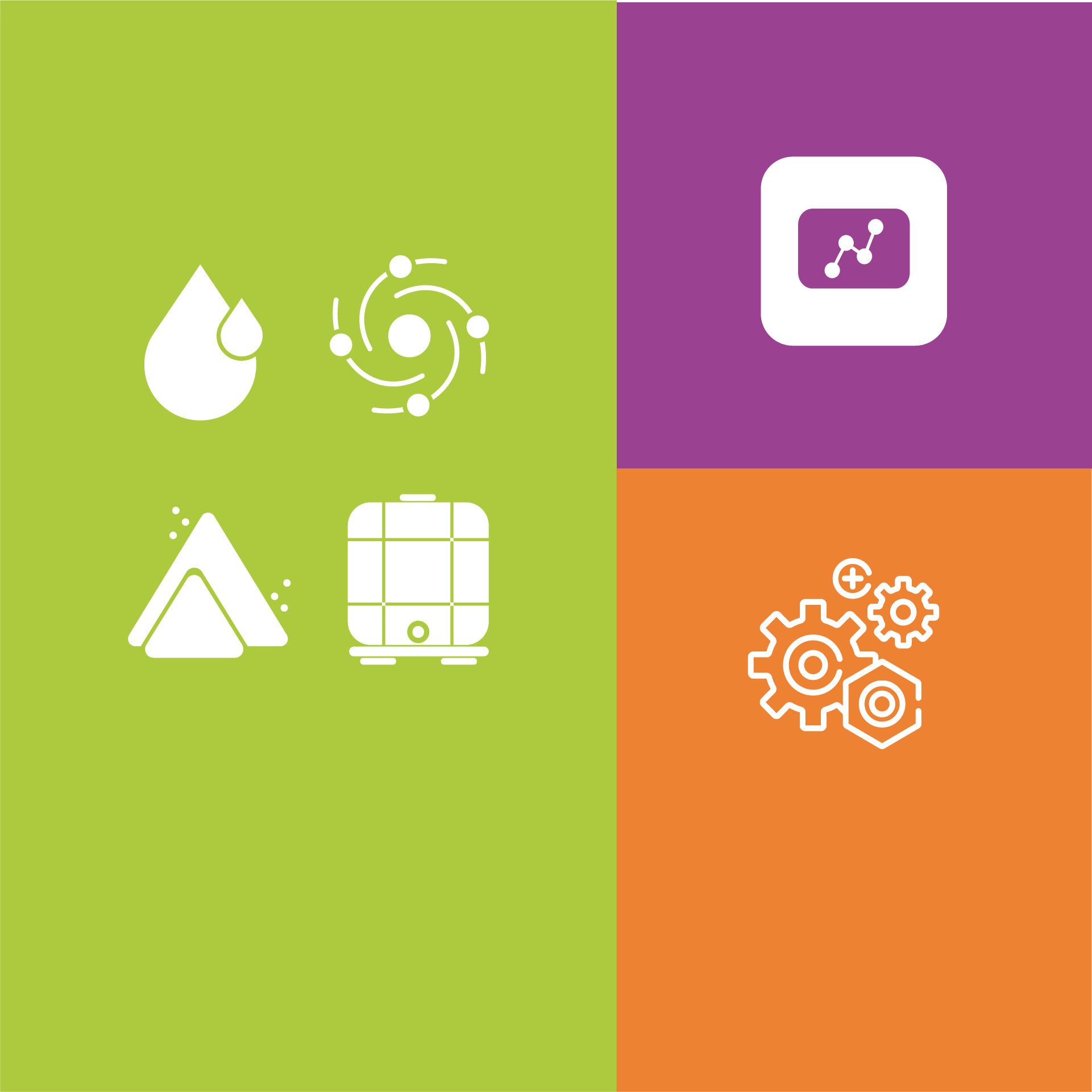Why must textile industry implement an ERP software?
One of the fundamental pillars of daily work in textile industry the collection and analysis of data. This is compiled by software systems used to optimise different processes, demonstrating that …

One of the fundamental pillars of daily work in textile industry the collection and analysis of data. This is compiled by software systems used to optimise different processes, demonstrating that its implementation increases manufacturing productivity.
In a previous post we talked about the three types of software most used in the textile industry. Also, we dedicated another post to delve into the key points of MES software. In this one, we’re going to talk about other fundamental software for all companies: the Enterprise Resource Planning, known as ERP.
ERP software is a specialised system allowing the unification and organization of all areas of the company. In other words, a system that allows traceability of all manufacturing process and, therefore, seeks the planning and optimization of resources.
This tool is very helpful to manage the manufacturing process, logistics, distribution, inventory, shipping, billing & accounting, among others by using a modular way for each area. It’s often involved in the control of other activities such as sales, deliveries, payments, quality control, customers and suppliers, administration, or HR.
The main objectives of ERP systems are:
- Unification and traceability of all processes in a single system.
- Optimisation of business processes.
- Resource planning.
- Automation of processes between company areas.
- Access to data and creation of structured information.
- Possibility of sharing information through all company departments.
Features of ERPs
An ERP must be modular, configurable, and specialised.
Modular
ERPs allow the visualisation of all processes. They understand a company is a combination of many departments interrelated each other that must share the information generated from their processes.
An advantage of ERP, technically and economically, is that their functionality is divided into modules which can be implemented according to the requirements of the textile company.
Configurable
They can be configurable by making coding developments. For example, inventory controlling can be different form one company to another, as the first one may need to handle de data by lot splitting, while the other is using other system.
That’s the reason why more advanced ERPs often incorporate programming tools to implement of new processes quickly and based on their needs.
Specialised
Working with a specialised ERP is the logic step for companies requiring real solutions to their needs.
A generic ERP only offers a low percentage of effectiveness based on the general answers, requiring extra functional extensions.
Other kye features of ERP systems:
- Centralised database.
- ERP components interact with each other to consolidate operations.
- Data captured must be consistent, complete, and common.
- Companies implementing ERP often must modify some of their processes to align them with those of the ERP system. This is known as process re-engineering, although it is not always necessary.
- The same ERP solution, even with the same modules, can serve customers in different industries. By parameterising the system, the proper adaptation is achieved. In addition, the modification of interfaces, reports or even the business logic can be programmed.
Features of an ERP system for the textile industry
When we focus on companies in the textile industry, we must add some particularities, for example:
- The difficulty of managing complexity: interaction of many production departments such as laboratory, different sections of the plant, special adaptations on whether it is a spinning, weaving, dyeing, finishing company. Also, if it’s a vertical company among other aspects to consider.
- The increasing pressure to produce orders faster, in a highly price-competitive environment, which, in addition, customer’s orders are becoming smaller.
- Complex routings, often involving multiple passes through the same machines at different points in the production process, or the need for downtimes in manufacturing, which must be strictly adhered to achieve the desired results.
- Necessity to reprocess a fabric to ensure the colour, finishing, or characteristics of the product (weight, width, colour resistance to the sun, to sweat, or fabric resistance to tearing) are as specified in the technical data sheet.
- Sometimes ERP solutions are complex and challenging because they require customised development for each company, starting from the initial configuration of the application, which is common.
Personalisation’s and particular developments for each company require a great investment in effort, time, and a money to build up all business processes. Most companies looking for an ERP implementation, make the mistake to opt for a low-cost solution that can regret afterwards.
What need companies to implement an ERP system successfully?
To implement an ERP software properly, the following aspects are fundamental:
- To have an ERP needing the lowest developments.
- A technical team understanding the problems of each sector to define the best implementation.
- Working on a methodology established for each sector.
- Maintain a strong project management.
Customizing an ERP software may result complicated and expensive as most of the packages aren’t designed for it. Therefore, many companies implement their ERP following the industry best practices. Most of them are very generic in their reports and require a specific development in every stage of the implementation process.
A company without an ERP system can find many standard software apps that doesn’t allow personalisation nor optimisation for their business. Hence, is when engineering design is required to develop and roll out specific functions such as customer tracking, complex interconnection between all departments, sections, logistic warehouses among others. The advantage to have an adapted ERP implemented is the integration of all this challenges in one ecosystem.
Other challenges that companies must face is the continuous investment in personnel training to handling the system correctly. Since this software is an evolving system, there must be necessary to implement company policies to ensure the proper data obtention and maintenance.
In conclusion, implementing an ERP system is necessary for digital transformation to 4.0 industry we’ve talked about on many occasions in this blog. We insist there’s a clear benefit at all levels in a textile plant, as contributes to detect when is necessary to implement improvements in manufacturing, fulfilling system, supply chain, and many other departments.
If you want more information, tell us about your project, we will be happy to advise you without obligation. Write to us! We also invite you to follow us on our LinkedIn page.





